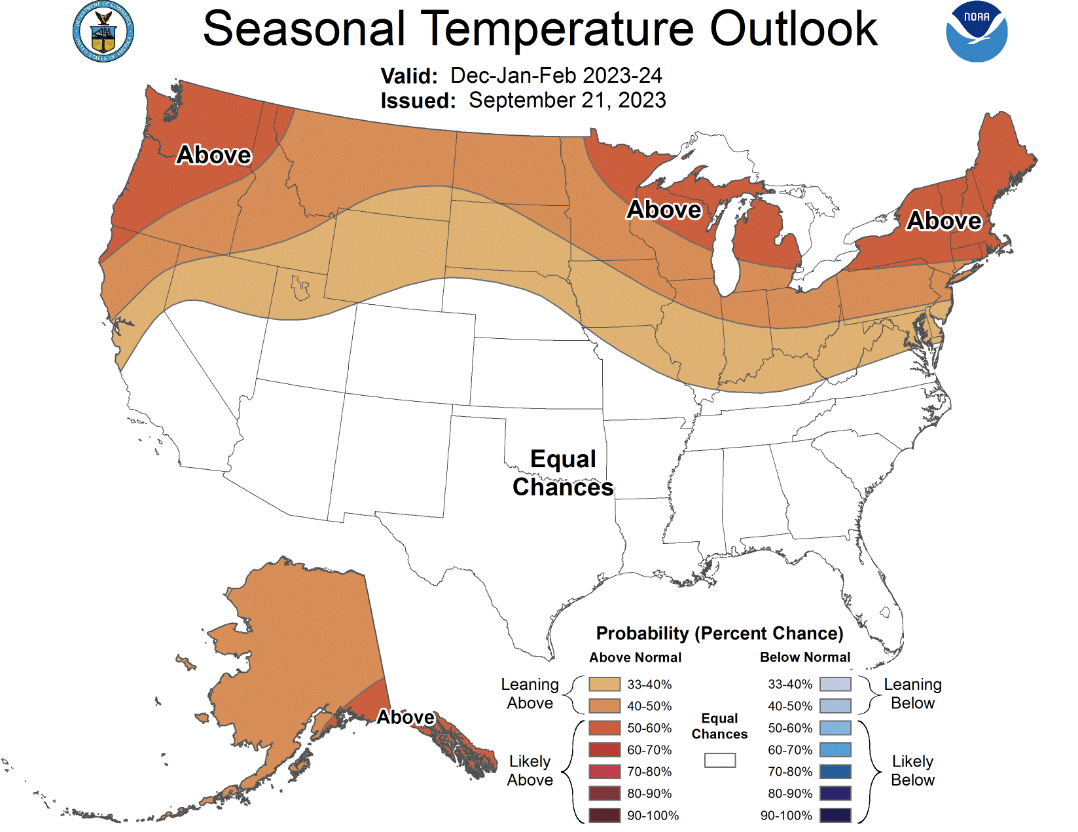The National Oceanic and Atmospheric Administration has released its projections for the winter of 2023-24, indicating that there is a strong likelihood that the El Niño weather pattern will continue.
According to NOAA, the northern tier of the U.S. will likely experience above-average or well above-average temperatures from December through February.

The models also predict that the upcoming winter will bring below-average precipitation to the northern U.S. Much of the Southern U.S., on the other hand, could see a wetter-than-usual winter, NOAA predicts.

According to NOAA's models, there is a 95% chance El Niño continues through the winter.
El Niño is part of a cycle when waters in the equatorial Pacific Ocean become warmer. Generally, whenever there is an El Niño pattern in place, the Northern U.S. has warmer winters, NOAA said.
"El Niño conditions remain strongly in place across the equatorial Pacific Ocean both in the ocean as well as the atmosphere and so is considered in the preparation of the October outlook," wrote NOAA forecaster Jon Gottschalck. "Potential impacts, however, are less likely and generally weaker than that sometimes observed during winter and early spring."
SEE MORE: More Americans are feeling the direct effects of climate change
In NOAA's updated fall 2023 forecast, the agency predicts the Pacific Northwest and New England will likely have above-average temperatures.
NOAA said that the continental U.S. had its ninth-warmest August on record. It also was the 15th-warmest summer on record for the continental U.S.
Globally, August 2023 was the hottest on record. Through August, 2023 has been the second-warmest year on record across the world, NOAA said.
“Not only was last month the warmest August on record by quite a lot, it was also the globe’s 45th-consecutive August and the 534th-consecutive month with temperatures above the 20th-century average," said NOAA Chief Scientist Dr. Sarah Kapnick. "Global marine heat waves and a growing El Niño are driving additional warming this year, but as long as emissions continue driving a steady march of background warming, we expect further records to be broken in the years to come.”
Trending stories at Scrippsnews.com



